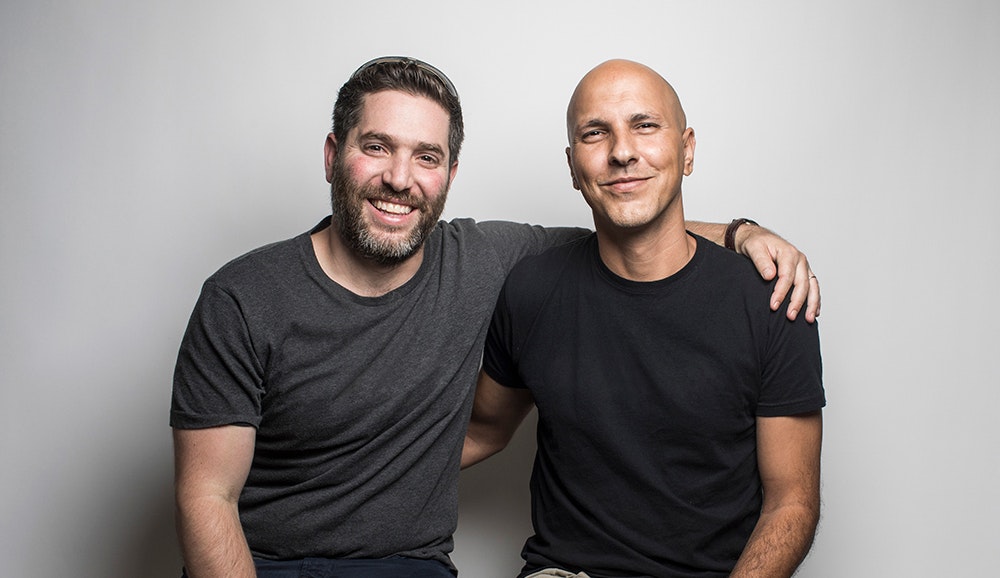You expect to shed blood, sweat and tears when you start a tech business. Metaphorically at least. But sometimes, you really do cry your eyes out.
For me, that came at the end of 2018. My company had raised a Series A, started to gain traction, built a team of over 35 employees in the UK and Israel, and yet — I found myself ‘firing’ half of them.
Why? Because we’d decided to pivot. We were no longer going to be building a marketing product (Pixoneye); we were going to adapt our existing technology to develop a deeptech one (what’s now Edgify). Here’s what I took from the experience.
Handle the remaining team with care or lose talent
Taking care of the team applies as much to those discarded by the change of direction as the ones who stay post-pivot. But it’s essential you don’t lose the buy-in of those who remain. How you treat people matters.
It’s essential you don’t lose the buy-in of those who remain.
With no product to sell as we worked on a new one, the entire commercial team had to go, which meant shutting our UK office. That was a straightforward, business decision. But there’s a financial reality to developing a new product offering. You have to conserve funds and ‘cut the live meat’ and we needed to look at our team in Israel too.
In situations like this, communication and fairness is key. We knew disgruntled employees could be bad news. The senior managers and I made ourselves available to anyone who wanted our time and reached out to everyone we knew who was hiring. We helped place two of our former employees in portfolio companies of our investors. And for the employees we kept, we secured their options in the post-pivot company.
Only keep onboard people crucial to the pivot
You have to understand the status of the new business the day after the pivot. Is it pre-product market fit? Is it pre-development?
We needed to establish who would be essential for the pivot to hit its first milestone and who would be a luxury. To do that, we took as much emotion out of the equation as possible. Skillset, not personality or performance to-date, was the measure. We had hired a VP marketing once we had product market fit in our pre-pivot product, so while she was phenomenal, she had to go. You can’t keep people on for down the road.
We asked ourselves, ‘Would we have brought them in if we were hiring today?'
We had some amazing people who we loved — and I’d work with again tomorrow. But we dug out their CVs, removed their personal details and looked at their qualifications. We’d gone from a marketing product to deeptech, so asked ourselves would we have brought them in if we were hiring today? We sat down and had honest conversations about each person, treating it like a job interview without the candidate.
In hindsight, even though we let go 17 people, we didn’t go far enough. The truth is, fewer companies survive after a pivot than raise Series A and this left us needing cash far too soon.
Keep the pivot out of the press
It’s simple: control the message or damage your future fundraising ability.
Future perception among prospective clients and investors is key as they will ask about why you pivoted. The more your story is out there the less you can own it — no matter how much sense it makes. As soon as you pivot, you break the accepted template of a successful tech company — seed round, A, B, C…
If you did an A round and are back to a seed round but have been working for five years when you should have had product market fit after two years, eyebrows will be raised. Going from 35 employees to 18 when the norms say you should be growing makes for tough questions.
Keep your drive for winning awards and speaking at events low while you’re getting your foundations right in the post-pivot company.
Reflecting now, as a founder, I’d suggest you keep your drive for winning awards and speaking at events low while you’re getting your foundations right in the post-pivot company. Only once you’ve got something to show should you go to social media to share the next phase of your journey.
Don’t see a downround as a dirty word — focus on your story
To keep going, we did a downround. There’s no escaping it, a downround is seen as a black mark. It’s associated with startups that grow too fast. But it doesn’t have to mean a company has failed. It can actually be a positive thing if the company has restructured and is now growing again — though this might take some convincing.
People say a downround is bad for founders because we lose all our shares. But a controlled downround where investors re-allocate your shares isn’t. Effectively, share ownership is erased — for founders, and investors too. However, existing investors that believe and support the pivot are able to pre-empt and resume their pre-pivot position.

Let the old business slowly die and keep the pivot low-key
I asked our investors whether we should announce that we had their support for the pivot. One of our board members — an ex-founder — gave me a great tip. He said:
“Nobody needs to know. It’s not like you’re letting a bunch of clients go and your product is all over the news. You’re not Uber switching from driving to selling parachutes. You’re fine. Wait until your next round.”
So we quietly created a new logo and website, yet kept our old website and emails running and slowly let it die. By the time we did our $6.5m seed funding round there was already a new company. Everyone knew it as Edgify, so there was no need to dig.
The pivot should not be a topic until you’re out of that vortex. You have so much to deal with as it is, so don’t need to waste time and effort trying to explain the pivot and its reasoning. Being brutally honest, all we cared about at that stage was surviving the inevitable turbulence of the pivot. Believe me, there’s a reason it’s been two years since the pivot and this is the first time I’m writing about it.
Secure at least 10 months’ budget and shareholder support
The reason the majority of businesses fail to survive a year post-pivot is down to budget. Most do it too late. As a startup founder you get so attached to the business and the team you can’t quite cut the umbilical cord.
We raised Series A for Pixoneye at the end of April 2018, knowing there was potential to pivot the company. Initially, we said we’d give it six months, but by August we pretty much knew we were pivoting. And it was essential that we had those funds in place.
Octopus Ventures, our lead investor from our pre-pivot company, agreed that the £4m it had invested in Pixoneye would now go into a company that had never been formally pitched to them.
To get the rest of the shareholders on board, our pivot SWAT team — my cofounder, head of finance and VP R&D — presented Pixoneye’s current status and the potential of the pivot. We also ran group and individual sessions to allow them to ask questions and discuss the transition openly. Once we had their support we returned to the board — who we felt were aligned — for a final vote.
By January 2019 the transition was complete and Edgify became our entire focus.
I fear I’ll always have second thoughts. We’ll never know how the Pixoneye chapter would have turned out, but you can’t let that derail you. We’re at an exciting stage with our retail product taking off. And when Edgify hits £10m ARR, I’ll close the book on our business’ past.


